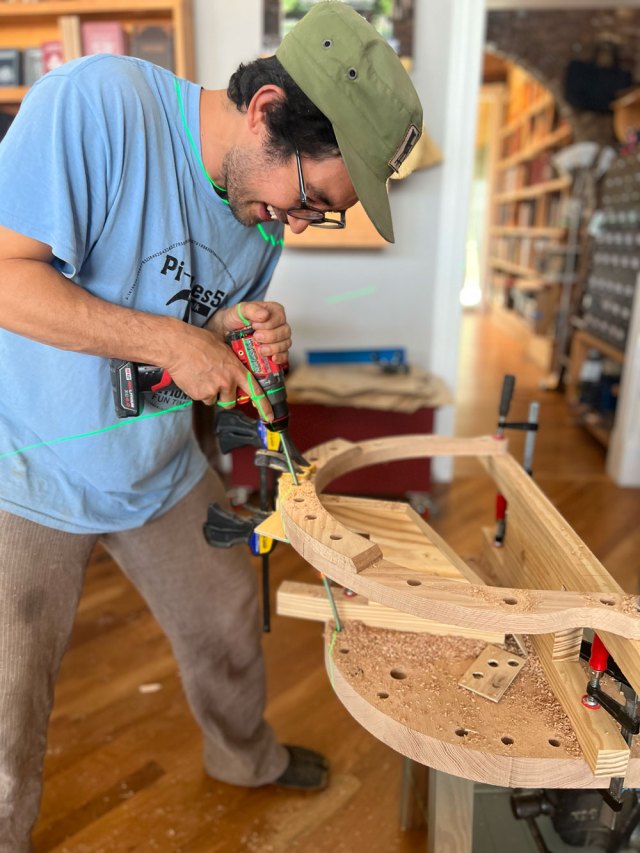
I built this lowback for the third edition of “The Stick Chair Book” (coming out this year). This chair reflects all the design changes I’ve made to the form during the last five years. But the one thing I didn’t change is its seating geometry.
The lowback chair (and my two Irish chairs) are the most comfortable chairs I make. This one is ideal for keyboarding or dining, with a wide sweeping back that supports your lower back without intruding on it.
The chair is made out of red elm, assembled with animal glue (that we make) and finished with soft wax (which we also make).

If you’re curious how this chair is different than the one in “The Stick Chair Book,” here are the major changes. The seat is thinner with a steeper (45°) underbevel. The arm is narrower (1-7/8″) without sacrificing any back support. The hands are an old shape that I now prefer and a bit longer. The undercarriage uses octagonal components, which are lighter and just as strong.
One new detail to this particular chair is that I have left the leg tenons and their wedges just a wee bit proud. This makes them a bit stronger and looks nice. I have been trying to get this effect for several months now, and I finally nailed it.

Details: The chair has a seat height of 17″ at the front and drops about 3/4″ to the rear (I am happy to lower this chair for shorter customers). The chair is 27″ high overall. The soft wax finish is non toxic (so your toddlers can suck on the stretchers). It has a mellow sheen and lasts for many years if treated kindly. But if you ever damage the finish, it can be easily repaired by applying more soft wax.

How to Buy the Chair
I’m selling this chair via a silent auction. The final hammer price includes shipping and crating to anywhere in the lower 48. If you wish to buy the chair, send an email to lapdrawing@lostartpress.com before 3 p.m. (Eastern) on Monday, September 8. Please use the subject line: “elm chair.” In the email please include your:
- Your bid (opening bid is $600)
- U.S. shipping address
- Daytime phone number (this is for the trucking quote only)
If you are the highest bidder the chair will be shipped to your door. The price includes the crate and all shipping charges. There are no auction fees or additional charges. Alternatively, the chair can be picked up at our storefront. (I’m sorry but the chair cannot be shipped outside the U.S.)
— Christopher Schwarz
























